Premier Guitar met with Duncan Swift—guitar tech for Pixies frontman Charles Thompson (aka Black Francis, Frank Black)—and guitarist Joey Santiago before the influential alt-rockers’ February 2, 2014, show at the Ryman Auditorium in Nashville.
Charles Thompson’s Gear
Guitars
Thompson keeps it single-coil simple with two stock vintage Teles and two ’50s Martins—a D-28 and a D-18. When he needs an angrier tone, he relies on the P-90 in his cherry 1963 Gibson SG Jr.
Amps
Both Thompson’s Teles and Martins are run through vintage Vox AC30 heads driving Vox extension cabs. Weber MiniMASS attenuators help him keep volume at reasonable levels for smaller venues such as the Ryman.
Effects
As with his guitars and amps, Thompson keeps his pedalboard fairly spare. He keeps his axes in tune with a Boss TU-2, uses a Klon Centaur for overdrive, and gets some silicon-fuzz action with a 1-knob Duh pedal built by none other than Premier Guitar senior editor Joe Gore. A Boss FS-5L activates his Vox’s tremolo circuit. Thompson powers his pedals with a Voodoo Lab Pedal Power 2 Plus, and he uses a Lehle Dual SGoS to switch between his tuner and his electric and acoustic signal paths—the latter of which uses a Radial J48 active direct box.
Joey Santiago's Gear
Guitars
Santiago goes big with a Les Paul humbucker assault, occasionally showing a sweeter side with his Bigsby-equipped 1965 Gibson ES-345, which features a Varitone switch that the guitarist usually keeps on position 3.
Amps
A Marshall JCM800 50-watt has been Santiago’s mainstay for dirty tones since the beginning of the Pixies—he’s used it on every album and every tour. For clean tones and extra definition, Joey runs his vintage Fender Vibrolux Reverb on 7, occasionally employing the amp’s lush verb and tremolo. He keeps a newer Vibrolux on hand as a backup, too.
Effects
Santiago controls his pedals primarily through his GigRig G2 switcher, which enables him to engage various combinations of pedals while keeping those that aren’t being used out of the signal path. His stompboxes include a Boss LS-2 Line Selector, Keeley Compressor (2-knob), Swart Atomic Boost OC44, Boss FZ-2 Hyper Fuzz, Fulltone OCD, Maxon AD9Pro analog delay, Empress Tremolo, a trusty and crusty old DOD FX-17 wah-volume, an Electro-Harmonix Holy Grail Nano, a TC Electronic PolyTune, and a Lehle Dual SGoS for amp switching. Hidden under the top portion of Santiago’s pedalboard are three Moog Moogerfooger pedals—an MF-104M analog delay, an MF-108M Cluster Flux, and an MF-105 MIDI MuRF—all of which are switched by a GigRig QuarterMaster. A Roland EV-5 expression pedal controls different Moog parameters, depending on which is engaged. A Boss FS-6 footswitch controls the Vibrolux’s tremolo. All pedals are powered by a GigRig Modular Power Supply setup.



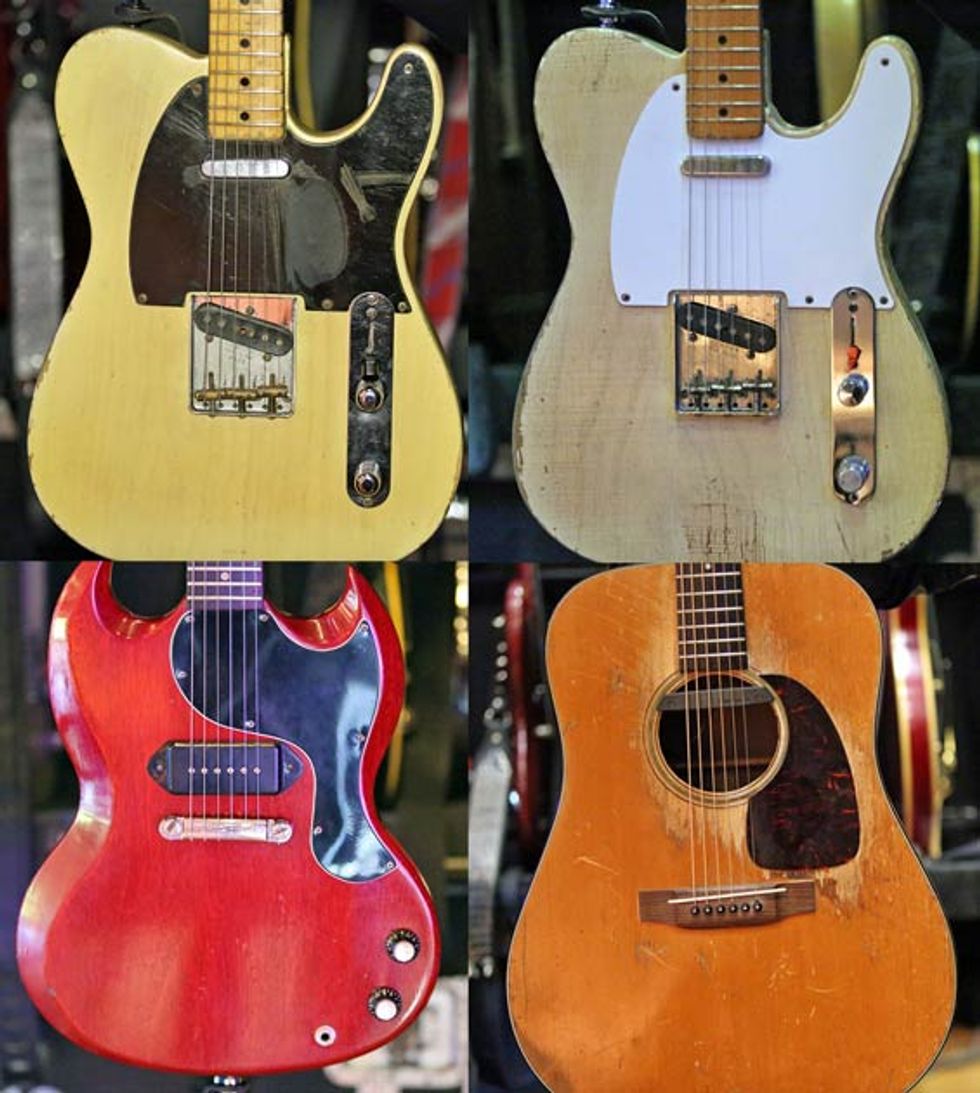
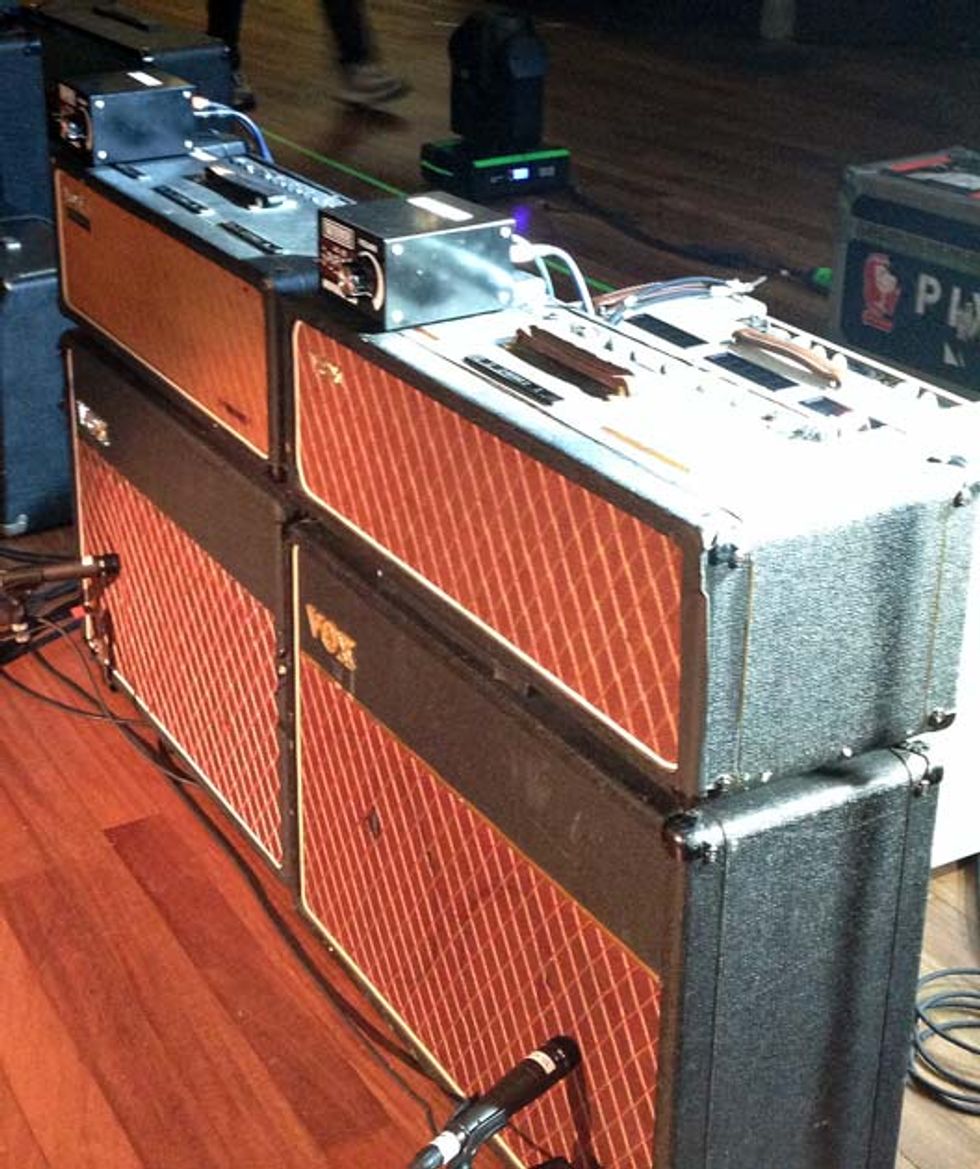
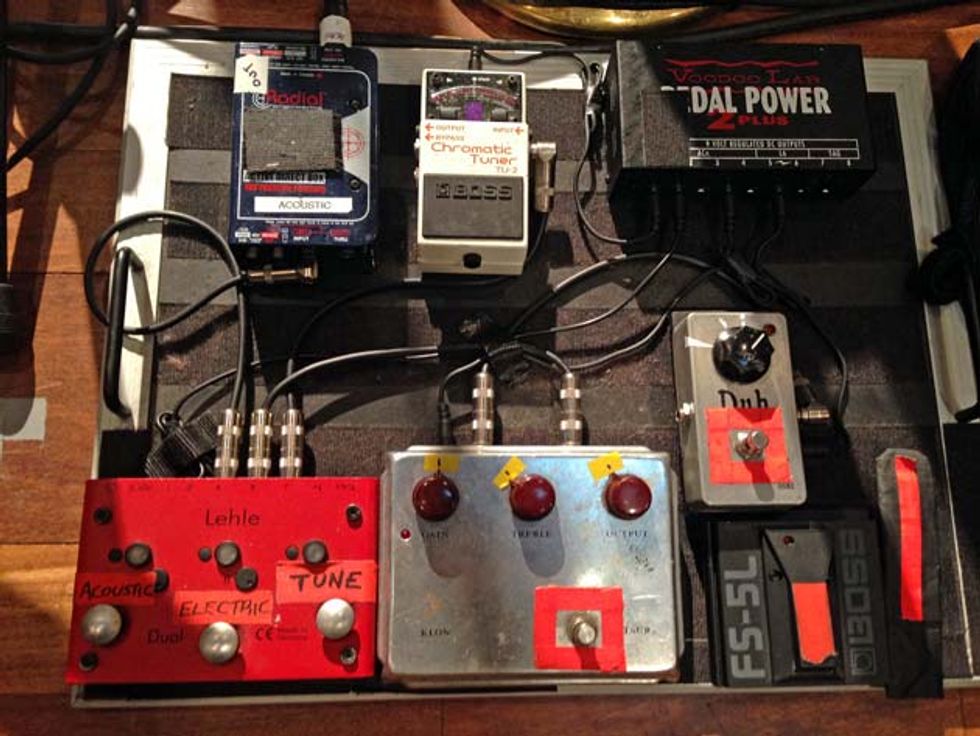

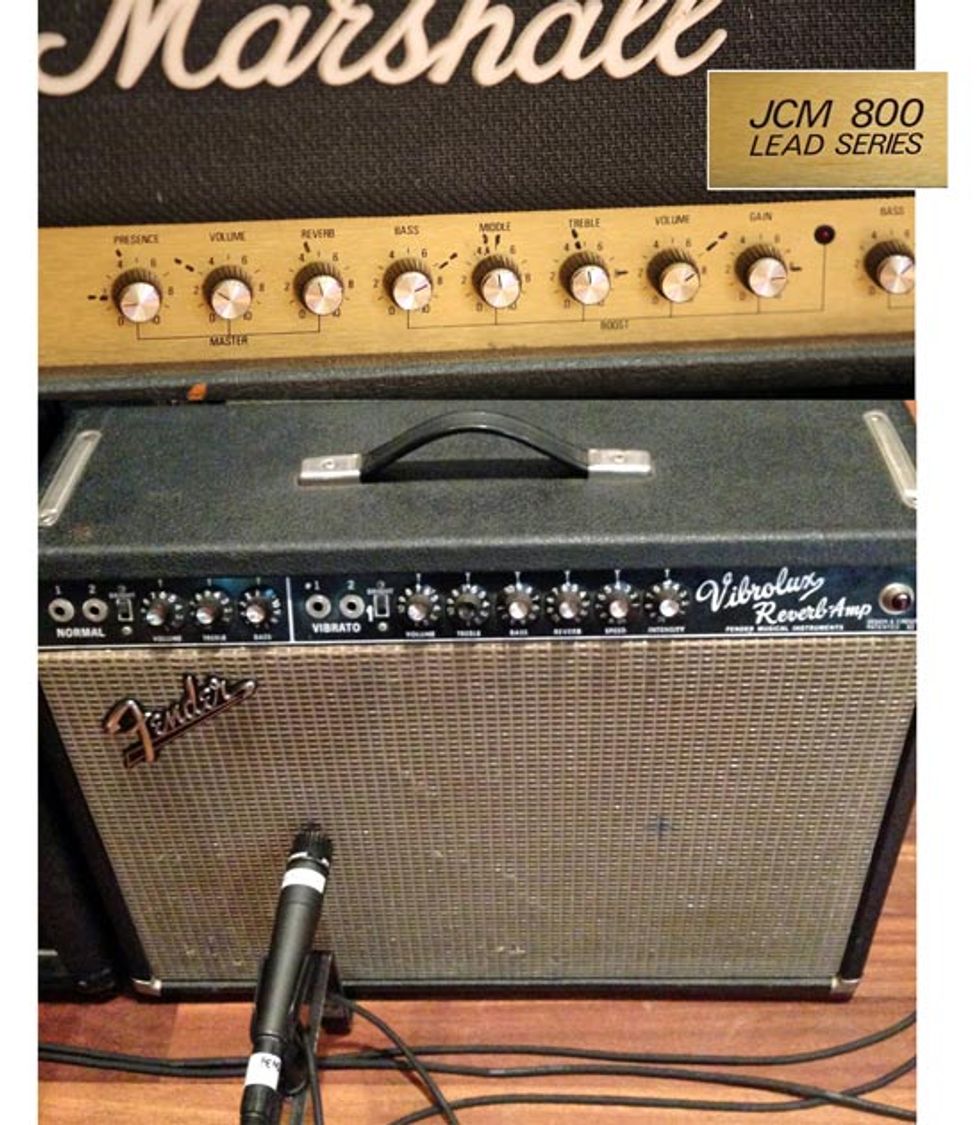
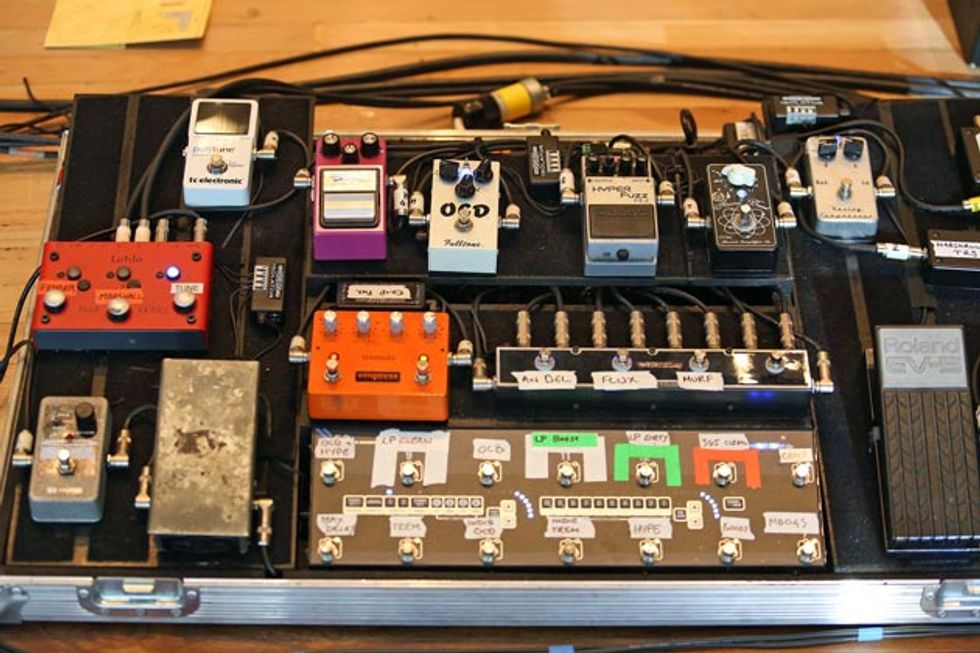




![Rig Rundown: Russian Circles’ Mike Sullivan [2025]](https://www.premierguitar.com/media-library/youtube.jpg?id=62303631&width=1245&height=700&quality=70&coordinates=0%2C0%2C0%2C0)

















